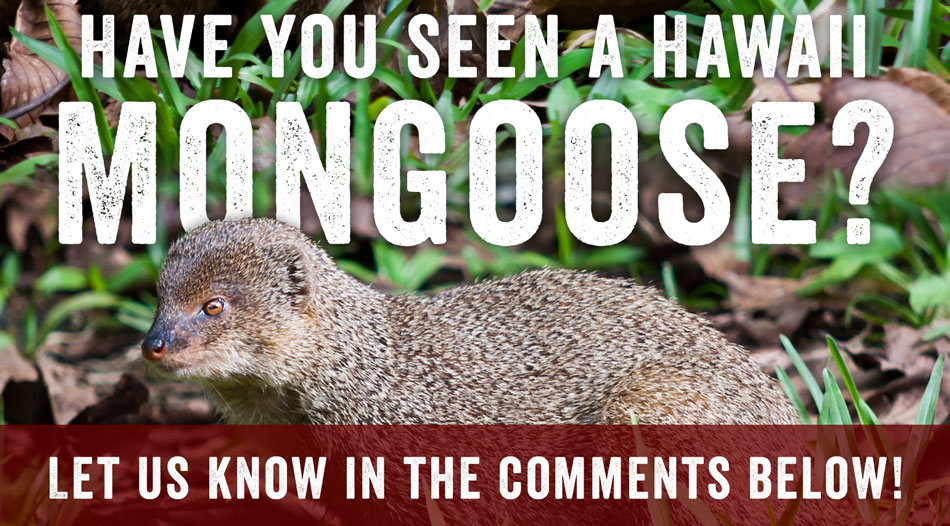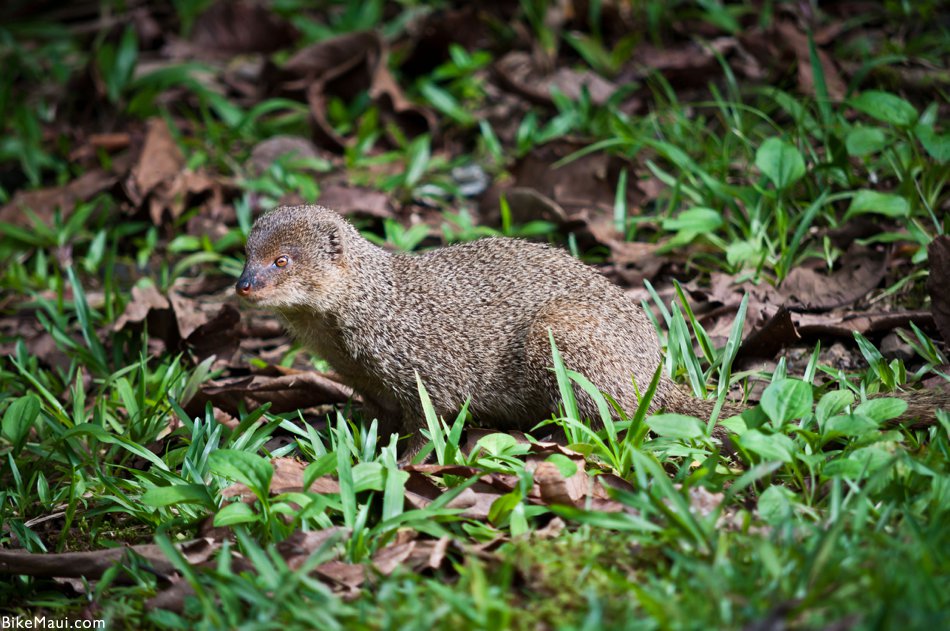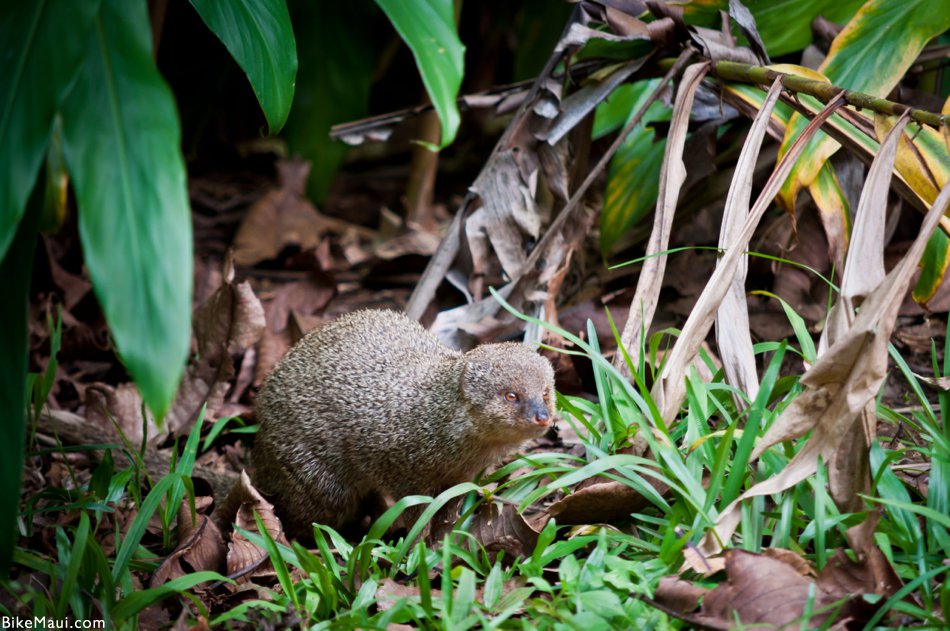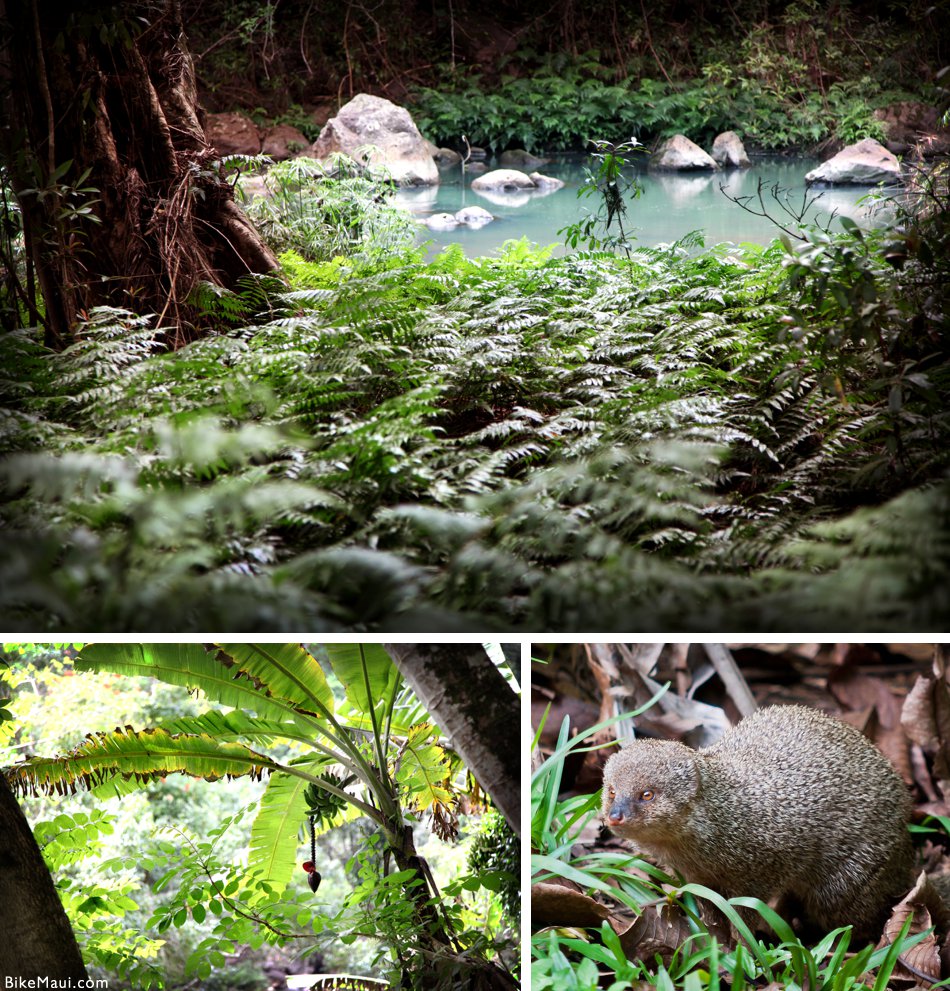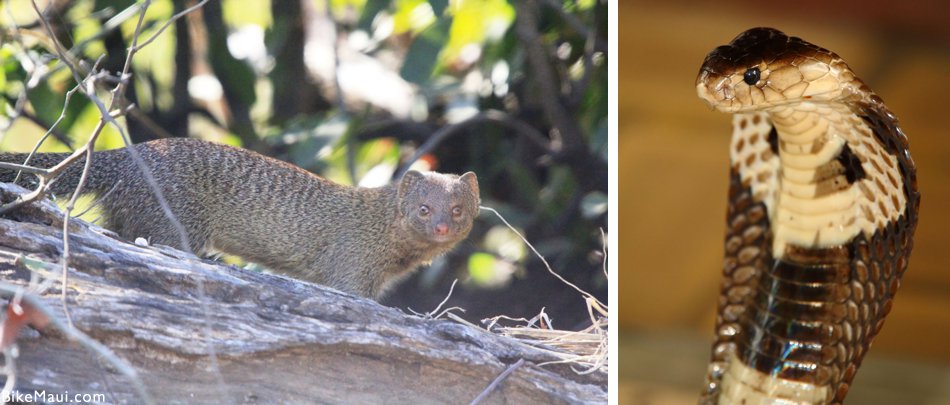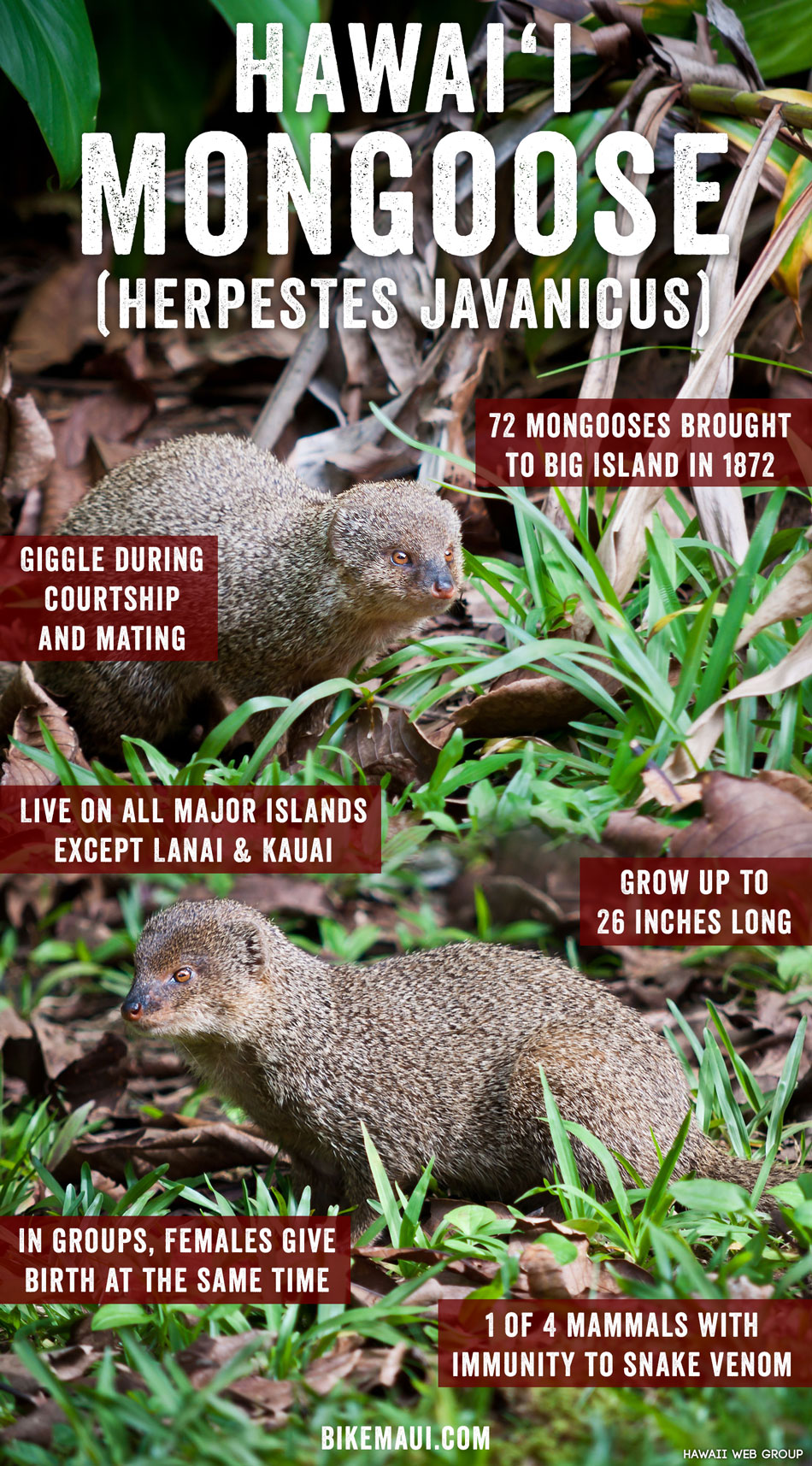
The 1800s were a time of remarkable change in Hawaii.
Westerners, following Captain Cook’s “discovery” of the world’s most isolated archipelago, began altering a landscape that had long been dominated by Polynesians. Diseases hit the natives, guns were introduced, and missionaries popped up around the islands with the velocity of a hurricane. Hawaii, as it was known, began to witness a transformation that would forever alter the demographic of its people and environment.
The following post was compiled by the good people at Haleakala EcoTours. They offer some of the best tours and most knowledgeable guides in Hawaii.
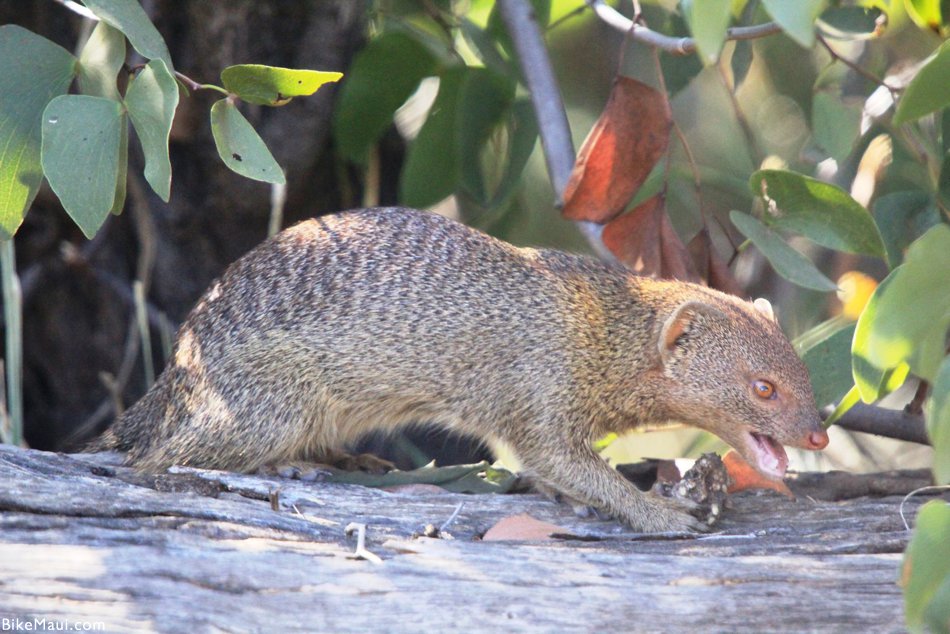
A large part of that transformation occurred with the introduction of sugarcane—a non-endemic plant that soon proved to flourish in Hawaii’s warmth and humidity.
Beginning with Ladd & Co.’s operation in Koloa, Kauai—and rapidly followed by the creation of plantations throughout the islands—sugar put Hawaii on the map as one of the biggest commercial producers in the world. With this title came a need to maintain production, thereby bringing plantation workers, flora, and fauna from across the planet to Hawaii’s shores. Among Hawaii’s imports during this era was the Small Asian Mongoose—a species of Southeast Asia’s Rikki Tikki Tavi that was shipped to Hawaii in the final quarter of the century.
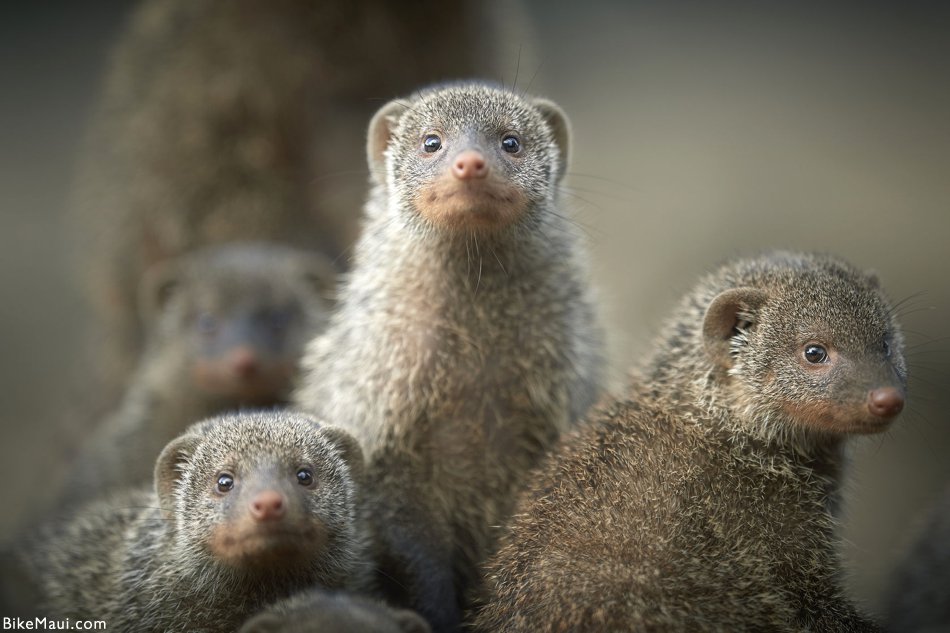
Fast and slender and up to twenty-six inches in length, mongooses have long held a vital but varied role in countries across the globe.
One of four mammals to have immunity to snake venom—through the possession of a neurotransmitter otherwise known as acetylcholine—mongooses were once spectacles throughout Pakistan and other eastern countries in mock snake fights, while the small carnivore was introduced to Okinawa to control the local habu snake in an effort that proved to be futile. And Ancient Egyptians revered the mongoose for their facility to outwit venomous snakes and their appetite for crocodile eggs.
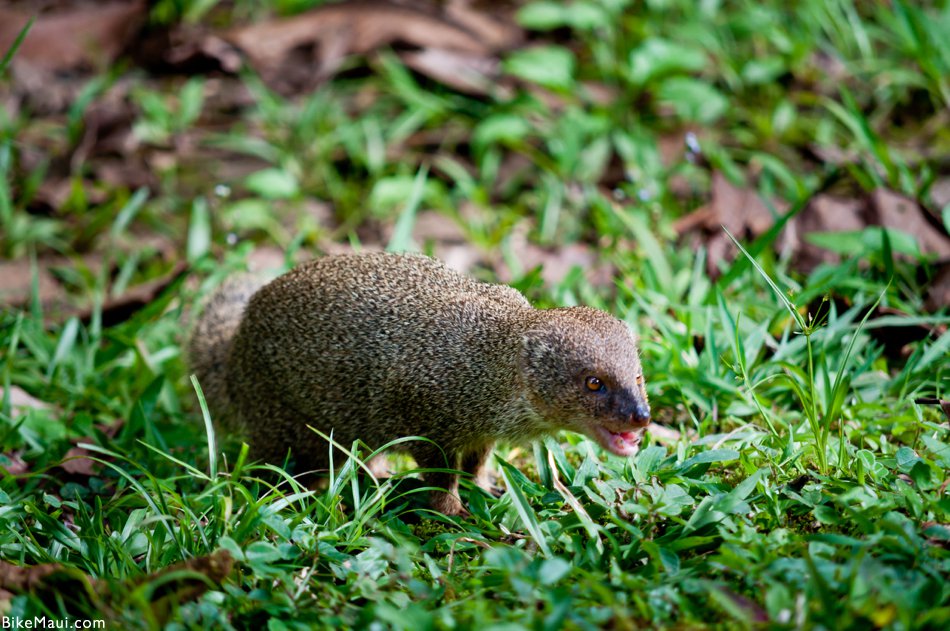
But their inclusion on a boat that sailed to the Big Island in 1872 was for a completely different reason: to help manage the growing rodent population troubling sugarcane.
Taking their cues from plantation owner W.B. Espeut in Jamaica—where sugarcane continues to be grown and produced commercially. Hawaiians first shipped 72 mongooses to the Pacific Sugar Mill on the Hamakua Coast of its largest island, thereafter breeding the sneaky critter to send to plantations on the other islands. There they multiplied and diversified, ultimately becoming a bigger species than those initially introduced from Kingston.
With the exception of Lanai and Kauai, today, all of the major islands have mongooses running wild.
And as for Kauai’s exclusion? While its reasons are rife with uncertainty, one belief maintains that upon their arrival in Nawiliwili Harbor, a mongoose bit a dockworker, who enraged, threw the cage in the water, thus prohibiting their establishment from starting (and prompting some to believe that their lack of existence, which is now changing—Kauai’s first mongoose was trapped in 2012—is responsible for the Garden Island’s rampant chickens).
Just a couple of months ago (May 2023), a mongoose was caught at Nawiliwili Harbor when an employee saw it chasing a chicken around the parking lot. The mongoose was caught and handed over to the Department of Agriculture – Wildlife Services. Mongooses still continue to threaten these islands but have still been unsuccessful in establishing a population thanks to quick and thoughtful actions by the local community.
The proliferation of mongooses was big indeed—but not in the way intended.
Let loose in plantations to manage the rodent populations, mongooses’ schedules were at odds with the very prey they were imported to hunt: mongooses operate during the day, and rats are nocturnal, and while they do feed on rodents occasionally, they don’t make as significant of an impact as was originally hoped.
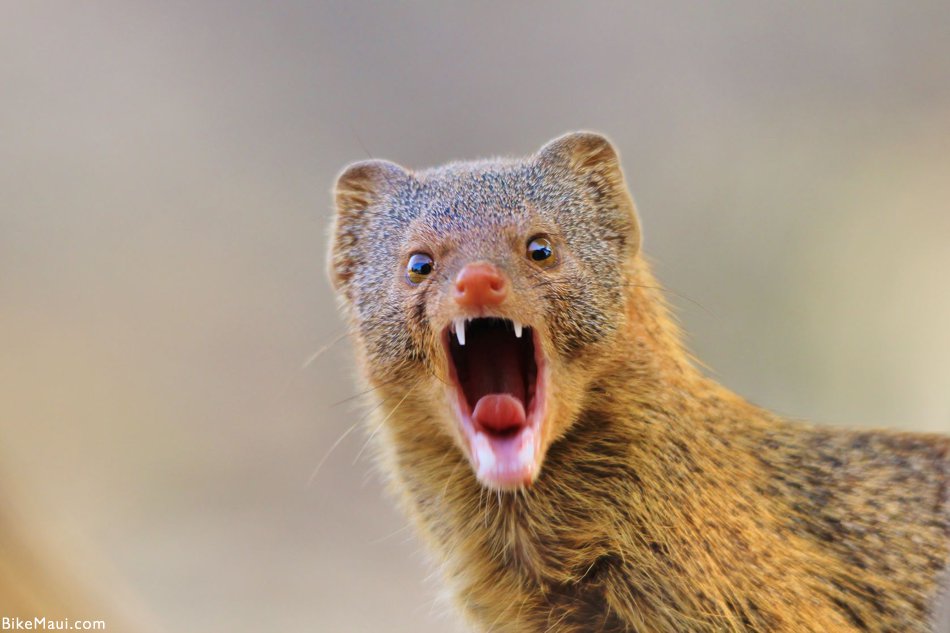
To compensate, mongooses began going after two of Hawaii’s most beloved fauna: ground-nesting native birds and both hawksbill and green sea turtles.
Three of their most targeted prey in Hawaii are on the federal list of endangered species: the petrel (‘u’au), the crow (‘alala), and Hawaii’s official state bird, the nene goose, which saw a decline in numbers from roughly 25,000 in 1778 to a mere 30 in 1952. As Tom Robbins jokingly put it in his novel Still Life with Woodpecker, “Mongooses also killed chickens, young pigs, birds, cats, dogs, and small children. There have been reports of mongooses attacking motorbikes, power lawnmowers, golf carts, and James Michener.” In 1916, Hawaii—then a territory—offered a bounty of ten cents per mongoose; today, the small, elusive critter is responsible for more than $50 million in damages to Hawaii and Puerto Rico annually.

Weasel-like with a pointed snout, mongooses are curious creatures, perhaps explaining why they captured Kipling’s attention in the creation of The Jungle Book.
Some travel solo; others move in groups, with females—whose pregnancies last an average of 49 days—often giving birth at the same time to ward off infanticide. And it isn’t just humans that laugh coquettishly when they’re flirting: mongooses “giggle” during courtship and mating in a high-pitched cackle familiar to Hawaiian residents outside of urban areas. In addition to flora and fauna, mongooses—who are considered “opportunistic eaters”— snack widely on earthly pleasures, including worms, insects, and lizards.
Beyond Pakistanis and Okinawan snake charmers—the latter of whom featured mongoose fights at their Okinawa World festivities before animal rights activists put a kibosh on it—mongooses have been known to be kept as pets, which was famously noted by Sir Arthur Conan Doyle and Bram Stoker.
(It ought to come as no surprise, considering that these distant relatives of the hyena have been known to learn tricks.) But the mongoose’s most well-known appearance in contemporary culture might be that of Mr. Magoo, a mongoose saved by a Minnesotan sea merchant that was one of the largest attractions at the Duluth Zoo until his death in 1968. But don’t be deterred by its cuteness (at least totally): mongoose, who generally live up to six years, carry a strand of e. Coli, as well as the precursor to Weil’s disease, leptospirosis. And while Rikki Tikki Tavi may have saved a family from the fatal bite of a cobra in The Jungle Book, mongooses rarely come into contact with the wild’s most daunting snake.
Often mistaken for a squirrel among visitors, mongooses live in burrows throughout Hawaii and are often seen racing across the road at dusk.
Tolerant of humans and other animals, they live alongside a wide range of animals in Asia, from jackals and badgers to tigers. But despite its reputation as a destructive pest to native plants and animals, some of its Rikki Tikki Tavi magic has never worn off: seeing one today is still considered to be a sign of luck. See how many you can count on your Road to Hana adventure.
